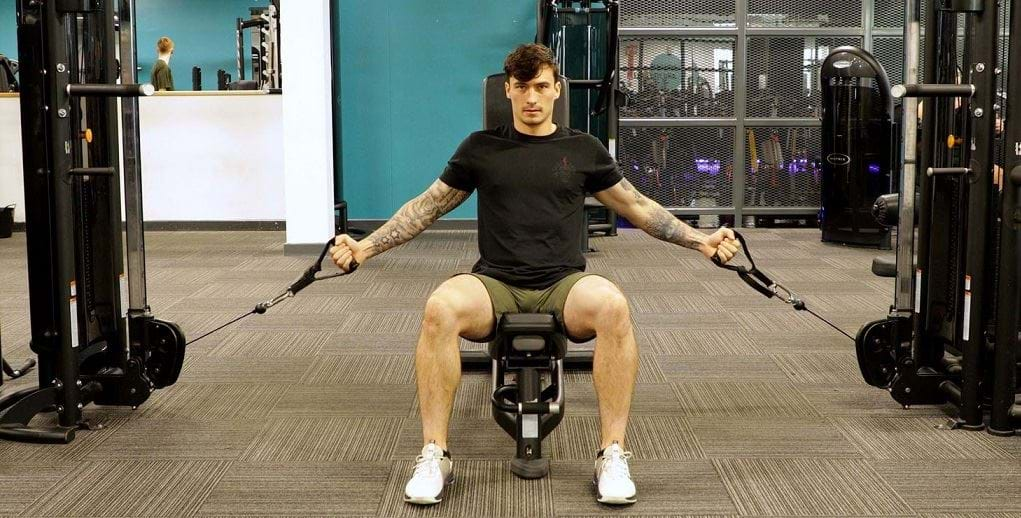Seated Cable Fly
What Is A Seated Cable Fly?

The seated cable fly is a cable chest fly variation which adopts a seated position on a bench. This provides stability and limits involvement from the core and stabilising muscles to isolate the pecs so they have to move more of the load.
All chest flyes use adduction to challenge the pectorals, with the muscle worked in a stretched position to allow more muscle fibres to be recruited. This also helps to open the chest muscles and improve flexibility, which can improve posture and upper back pain.
The use of the cables makes the fly more challenging as it provides tension throughout the entire movement, unlike free weight variations where tension is reduced at the top of the movement. The eccentric portion of the movement is also more of a challenge in cable flyes as gravity doesn't assist like it does with dumbbells.
Check out some other chest fly variations: dumbbell chest flyes, incline dumbbell chest flyes, decline dumbbell flyes, dumbbell floor flyes, single arm flyes
Commonly Asked Questions On Seated Cable Fly
Seated chest flyes are an effective movement for building the pectorals. The seated positioning means that there is less helped needed for stabilisation from the lower body and core, which isolates the chest muscles more.
Seated chest flyes target the pectoral muscles using adduction, allowing the muscles to be strengthened in a stretched position. The seated position helps to stabilise the torso, allowing for a greater focus on the contraction of the chest muscles.
Chest flyes are an excellent isolation exercise to build strength and mobility in the chest and are well tolerated when performed correctly with a suitable load. If you struggle with shoulder pain or are recovering from an injury, you may prefer to avoid chest flyes as the positioning can stress the shoulder joint. Working with a Personal Trainer to master the form can be beneficial too.
Seated Cable Fly Tips
Seated cable flyes may be more suitable for those with limited upper body flexibility or who are prone to shoulder issues, however it is important to still keep correct form to protect the shoulder joint. Keeping a soft bend in the elbows and only allowing the cables to go as far back until they are in line with the chest helps to prevent stress on the shoulders.
How To Do Seated Cable Flyes
Place a bench between two cable pulleys and set it up so that the back acts as a support when seated. Position the cables just above shoulder weight when seated and attach a single handle to each.
Sit down with you back against the support, shoulder blades pinned back, and press the handles in front of your chest.
Allow the handles to move slowly back towards the cable machine by moving your arms back in arc direction, with a soft bend in the elbows.
Stop when the handles are in line with the chest, then squeeze the pecs and push the arms to bring the handles back in front of the chest.
If you’re not sure if any of the above exercises are suitable for you, please consult your doctor before you start it. Need guidance on how to perform the exercise? Ask a personal trainer at your gym.